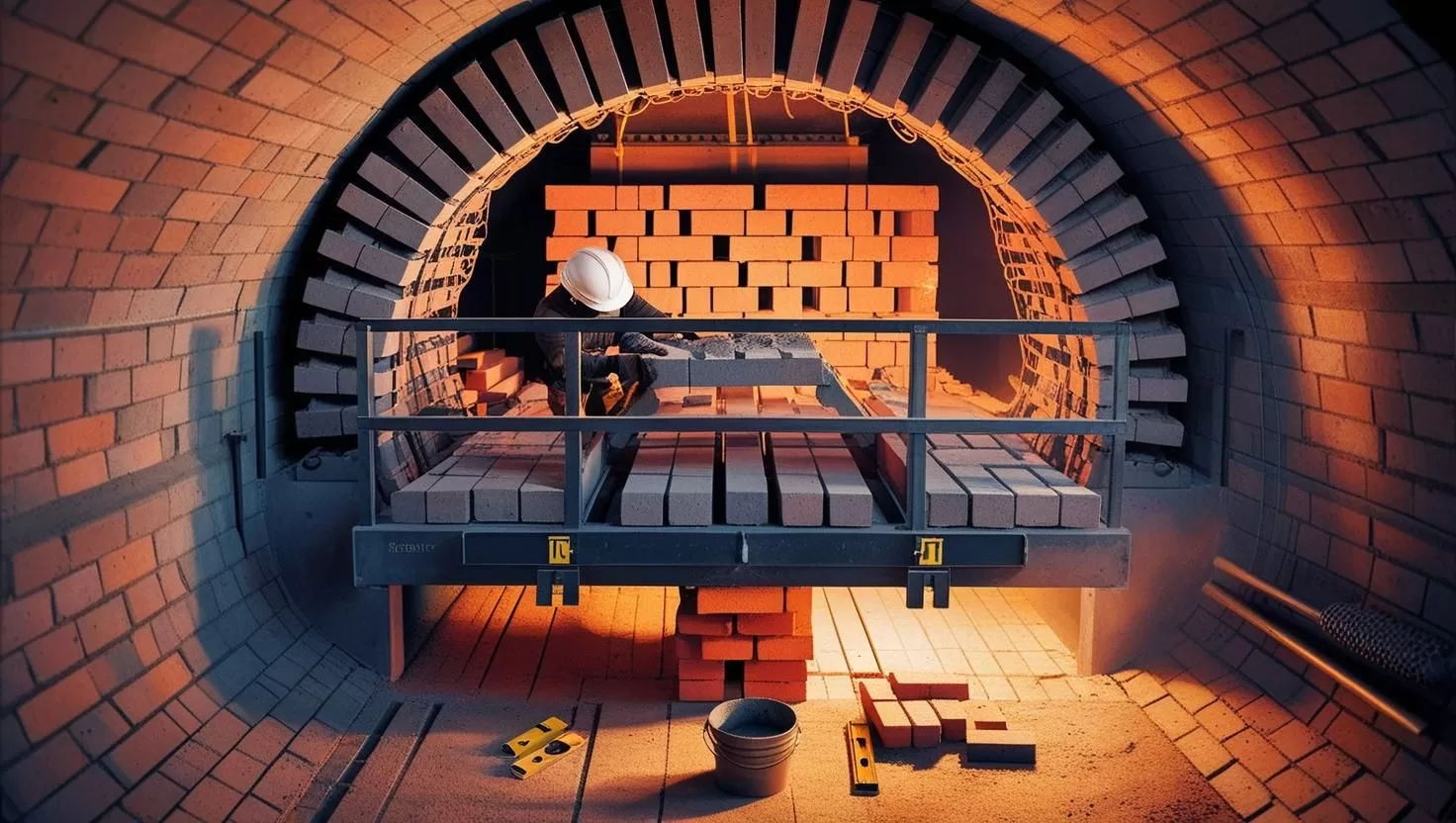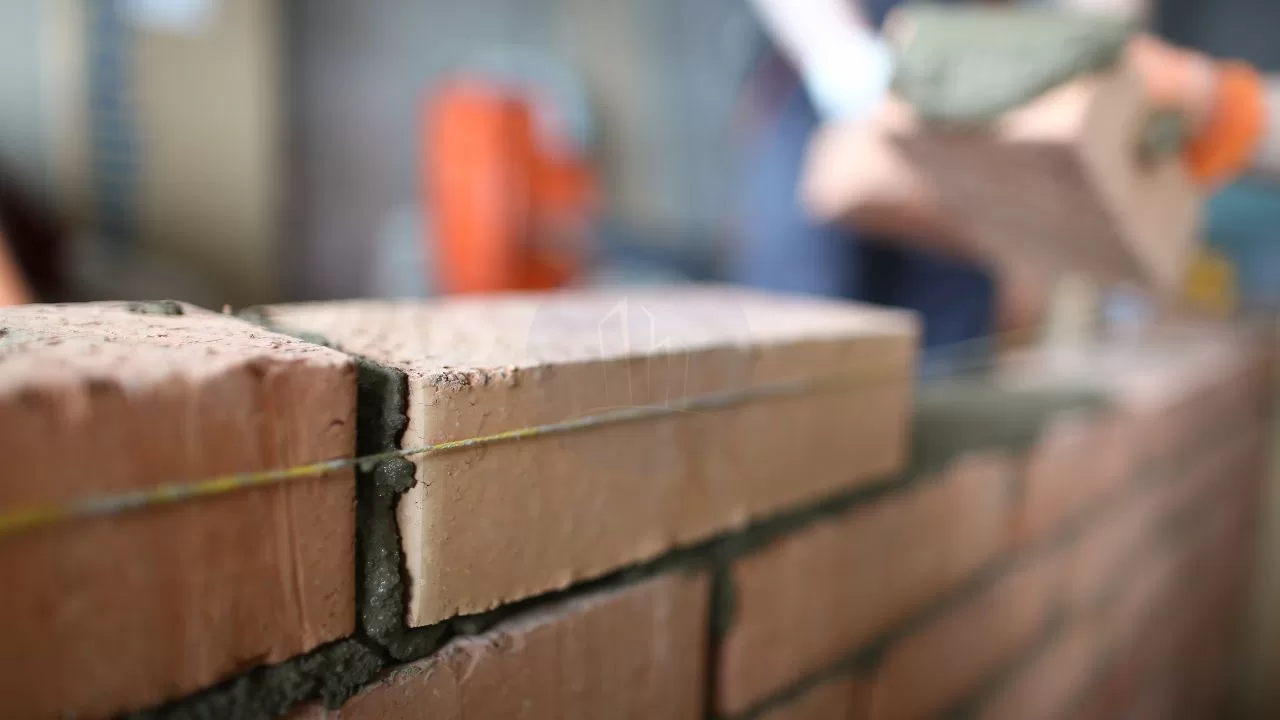Refractory bricks are specialized construction materials designed to withstand extremely high temperatures, making them essential in industries such as steel, glass, ceramics, and cement. These heat-resistant bricks maintain structural integrity and insulation in high-temperature environments like furnaces, kilns, and reactors. Whether you’re a builder, engineer, or homeowner planning a fire-safe project, understanding refractory bricks can help you choose the right materials for long-lasting performance. In this blog, we explore what refractory bricks are, their types, key properties, applications, and how to choose the right one for your project. We’ll also guide you on pricing and sourcing in India and beyond. Let’s dive into the world of refractory fire bricks and how they can improve safety and efficiency in thermal systems.
Table of contents
What Are Refractory Bricks?
Refractory bricks, also known as fire bricks, resist heat and retain their strength and structure under extreme thermal stress. Manufacturers make them from ceramic materials such as alumina, silica, magnesia, or chromite. These bricks differ from ordinary building bricks in their ability to resist thermal shock, corrosion, and abrasion. Commonly used in furnaces, fireplaces, and kilns, refractory bricks act as a barrier against heat loss and mechanical wear. Refractory experts categorize bricks into several types based on their material composition and properties, ensuring suitability for specific environments and temperatures.
Key Properties of Refractory Bricks
Refractory bricks exhibit the following core properties:
- High Heat Resistance: Capable of withstanding temperatures exceeding 1,500°C.
- Thermal Insulation: Low thermal conductivity prevents heat loss.
- Mechanical Strength: Resists cracking, abrasion, and pressure under load.
- Chemical Inertness: Withstands attack from acidic or basic slags.
- Low Porosity: Ensures minimal moisture absorption and better insulation.
These properties make refractory bricks ideal for high-temperature industrial operations and thermal insulation applications.
Types of Refractory Bricks
- Fire Clay Bricks: Made from hydrated aluminum silicates; used in fireplaces, ovens, and boilers.
- High Alumina Bricks: Contain over 45% alumina; ideal for steel plants and glass melting furnaces.
- Silica Bricks: Withstand high temperatures and acidic environments; used in coke ovens.
- Magnesia Bricks: Excellent resistance to basic slags; suitable for cement kilns.
- Insulating Fire Bricks (IFB): Lightweight and low thermal conductivity; used for insulation rather than structural load.
Each type serves a unique function depending on thermal, mechanical, and chemical demands.
Fire Clay Bricks
Craftsmen craft fire clay bricks from refractory clays rich in hydrous aluminum silicates, primarily kaolinite. These bricks can endure temperatures up to 1,775°C, making them particularly suitable for high-temperature applications such as fireplaces, ovens, and boilers. Additionally, their composition includes natural argillaceous materials, which may contain fine-grained micas and quartz, further enhancing their thermal stability. Furthermore, fire clay bricks exhibit excellent resistance to thermal shock, which is why they are commonly used for lining furnaces and kilns. As a result, their durability and cost-effectiveness make them a preferred choice in various industrial settings, where both performance and affordability are key considerations.
High Alumina Refractory Bricks
High alumina bricks contain a minimum of 45% alumina (Al₂O₃), with some premium grades exceeding 80%. As a result, they exhibit exceptional resistance to high temperatures, chemical corrosion, and mechanical wear. Industries such as steel plants, glass melting furnaces, and cement kilns widely use high alumina bricks due to these qualities. Furthermore, they offer high refractoriness, often above 1,750°C, which ensures performance under extreme heat. In addition, they demonstrate excellent thermal shock resistance, allowing them to withstand sudden temperature changes. Moreover, their low porosity and high density enhance their mechanical strength and durability. Consequently, high alumina bricks remain a reliable and long-lasting choice for industries that operate under aggressive thermal and chemical conditions.
Silica Refractory Bricks
Silica bricks consist primarily of silicon dioxide (SiO₂), typically exceeding 93% content. They withstand temperatures up to 1,700°C and resist acidic slags effectively. Engineers commonly use these bricks in constructing coke ovens, glass furnaces, and acid converters. Silica bricks also exhibit low thermal expansion and high thermal conductivity, which make them ideal for applications involving rapid temperature changes. Their ability to maintain structural integrity at high temperatures ensures they last longer in demanding industrial processes.
Magnesia Bricks
Magnesia bricks are primarily composed of magnesium oxide (MgO), offering excellent resistance to basic slags and high refractoriness, often above 1,800°C. They are widely used in environments where basic slags are prevalent, such as in steelmaking furnaces and cement kilns. Magnesia bricks exhibit good thermal conductivity and are known for their ability to withstand thermal shocks. Their high melting point and chemical stability make them suitable for lining furnaces that operate under harsh conditions.
Insulating Fire Bricks (IFB)
Engineers design Insulating Fire Bricks (IFBs) as lightweight refractory bricks to provide thermal insulation. Their low thermal conductivity helps reduce heat loss and improve energy efficiency in furnaces and kilns. Made from refractory clays with high porosity, IFBs trap air, enhancing their insulation properties. They withstand temperatures ranging from 1,260°C to 1,760°C, depending on the grade. Common applications include using them as backup insulation in high-temperature furnaces, flue linings, and kilns.
Each type of refractory brick serves specific functions based on its thermal, mechanical, and chemical properties, ensuring optimal performance in various high-temperature industrial applications.
Applications of Refractory Bricks
Refractory bricks are critical in numerous applications:
- Steel and Iron Furnaces: Line blast furnaces and converters.
- Glass Manufacturing: Used in tank furnaces and regenerators.
- Cement Kilns: Withstand rotation and high heat.
- Boilers and Incinerators: Offer insulation and corrosion resistance.
- Home Fireplaces and Pizza Ovens: Provide a safe and durable lining.
Use-specific selection ensures performance and longevity of thermal systems.
Steel Industry
Refractory bricks line blast furnaces, converters, and ladles in steel production, enduring extreme temperatures and corrosive slags. Their thermal resistance ensures structural integrity during smelting and refining processes, making them indispensable for efficient and safe steel manufacturing.
Glass Industry
Glass manufacturers use refractory bricks to withstand high temperatures and chemical corrosion from molten glass. To ensure durability, they line melting furnaces and annealing lehrs with these bricks. As a result, the bricks provide thermal insulation and maintain structural stability. This stability, in turn, is crucial for achieving consistent glass quality. Moreover, it enhances energy efficiency during the production process. Therefore, refractory bricks play a vital role in ensuring the reliability and performance of glass manufacturing systems.
Cement Industry
Refractory bricks are essential in cement production, lining rotary kilns and coolers. They resist thermal shock and chemical erosion, ensuring the longevity of kilns and maintaining optimal temperatures for efficient clinker formation.
Ceramics and Pottery
In ceramics, refractory bricks line kilns and ovens, enduring high firing temperatures. Their thermal stability and resistance to thermal shock are vital for producing high-quality ceramic products without structural damage to kilns.
Petrochemical Industry
Refractory bricks line reactors, reformers, and furnaces in petrochemical plants, withstanding high temperatures and corrosive chemicals. Their durability ensures safe and efficient processing of petrochemical products.
Power Generation
In power plants, refractory bricks line boilers, incinerators, and chimneys, providing insulation and withstanding high temperatures. They enhance energy efficiency and protect structural components from thermal damage.
Non-Ferrous Metal Industry
Refractory bricks are used in furnaces and crucibles for smelting non-ferrous metals like aluminum and copper. They resist high temperatures and corrosive slags, ensuring the integrity of melting and refining processes.
Foundries
In foundries, refractory bricks line furnaces and ladles, enduring the intense heat of molten metals. Their thermal resistance and durability are crucial for safe and efficient metal casting operations.
Chemical Processing
Refractory bricks line reactors and containment vessels in chemical industries, withstanding high temperatures and corrosive substances. They ensure safe chemical reactions and longevity of processing equipment.
Waste Incineration
Refractory bricks line incinerators, enduring high temperatures and corrosive byproducts during waste combustion. They protect structural components and ensure efficient and safe waste disposal.
These applications highlight the versatility and critical role of refractory bricks in industries requiring high-temperature resistance and structural durability.
Maintenance and Lifespan of Refractory Bricks
Refractory bricks typically last 5–10 years in industrial use, depending on operating conditions. Maintenance tips:
- Inspect for surface cracks or erosion regularly
- Avoid water seepage to prevent structural weakening
- Replace damaged bricks immediately to prevent hot spots
- Reapply protective coatings if required in corrosive environments
Proper care extends performance and reduces long-term costs.
FAQs
Q1: What are refractory bricks made of?
They are made of ceramic materials like alumina, silica, magnesia, or combinations depending on temperature and corrosion requirements.
Q2: Which refractory brick is best for a kiln? A: High alumina or insulating fire bricks are commonly used, based on whether structural strength or insulation is needed.
Q3: Can fire bricks be used in a fireplace? A: Yes, fire clay bricks are ideal for fireplaces due to their heat resistance and durability.
Q4: Are these bricks eco-friendly? A: Many modern bricks are made using low-emission processes and recyclable materials, enhancing their eco-credentials.
Key Takeaways
- Refractory bricks withstand high heat and protect industrial furnaces, kilns, and ovens.
- Multiple types (fire clay, high alumina, silica, magnesia) serve specific thermal and chemical needs.
- Prices vary based on material and quality, with sourcing available locally and globally.
- Regular maintenance ensures longer lifespan and safe performance.
- Choosing the right refractory brick enhances energy efficiency and structural safety.
Conclusion
Refractory bricks play a foundational role in high-temperature construction, offering heat resistance, durability, and safety. Understanding their types, properties, and applications helps in selecting the best option for industrial or residential use. Whether you’re lining a kiln or building a fireplace, the right brick ensures long-term efficiency and reliability. Always consult suppliers and material experts to get the best quality suited to your specific needs. Embrace heat with confidence—with the right refractory bricks in place.






